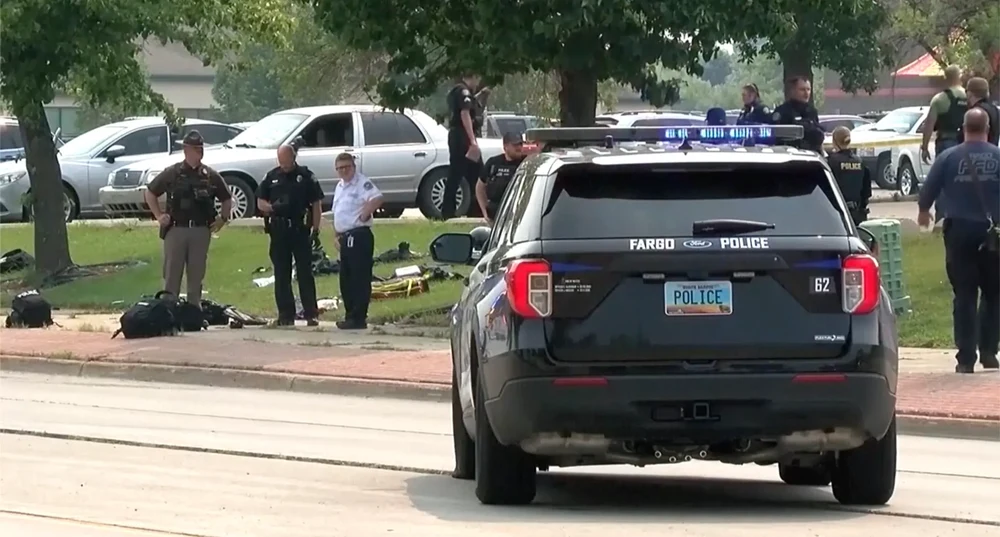- Who was the suspect in the North Dakota shooting and how did the shooting unfold?
- What is the current condition of the two injured police officers in the North Dakota shooting?
- What is the response of the Fargo community to the shooting that killed a police officer and injured two others?
- How does the North Dakota shooting fit into the larger context of gun violence in the United States?
On July 14, 2023, tragedy struck in Fargo, North Dakota, when a police officer was killed and two others were critically injured in a shooting that also left the suspect dead. The incident occurred as the officers were responding to the scene of a car crash, and the details of what happened are still under investigation. This shooting has left many people wondering what can be done to prevent similar incidents in the future.
The Tragic Shooting in North Dakota: What Can We Learn From It?
The shooting in North Dakota is just the latest in a string of violent incidents involving law enforcement officers in the United States.
According to data from the National Law Enforcement Officers Memorial Fund, 2022 saw a 29% increase in the number of officers killed in the line of duty compared to the previous year. And while the reasons for this increase are complex and multifaceted, there is no denying that it is a cause for concern.
As we try to make sense of what happened in Fargo, it is important to look at the broader context of law enforcement in the United States. What are the challenges facing law enforcement officers, and what can be done to support them in their work? How can we balance the need for public safety with the need to respect individual rights and freedoms? And what role should the community play in shaping law enforcement policies and practices?
One of the biggest challenges facing law enforcement officers today is the issue of mental health. Policing can be an incredibly stressful and traumatic job, and officers are often exposed to violence, trauma, and other difficult situations on a regular basis. This can take a toll on their mental health, leading to issues like depression, anxiety, and post-traumatic stress disorder (PTSD).
Unfortunately, many law enforcement agencies are not equipped to deal with these mental health challenges. There is often a stigma associated with seeking mental health treatment, and many officers are afraid to come forward for fear of being seen as weak or unfit for duty. Additionally, many law enforcement agencies do not have the resources or support systems in place to provide adequate mental health care for their officers.
To address this issue, we need to start by acknowledging that mental health is an important aspect of law enforcement. We need to create a culture where seeking mental health treatment is seen as a sign of strength, not weakness. Additionally, law enforcement agencies need to provide their officers with access to mental health resources, such as counseling and therapy, and they need to create support systems to help officers cope with the stress and trauma of their jobs.
Another important issue facing law enforcement today is the issue of police-community relations. Many communities, particularly communities of color, feel that they are unfairly targeted by law enforcement and that their rights are not being respected. This has led to a breakdown in trust between law enforcement and the communities they serve, making it more difficult for officers to do their jobs effectively.
To address these issues, we need to create more opportunities for dialogue and collaboration between law enforcement and the community. This means involving community members in the development of law enforcement policies and practices, as well as creating opportunities for officers to engage with community members in a positive and constructive way. Additionally, we need to work to address the root causes of crime and violence in our communities, such as poverty, lack of access to education and healthcare, and systemic racism and discrimination.
Finally, we need to explore new approaches to law enforcement that prioritize the safety and well-being of both officers and the community. This could include exploring alternative models of policing, such as community policing and restorative justice, as well as investing in new technologies and tools to help officers do their jobs more effectively and safely.
In the wake of the tragic shooting in North Dakota, it is clear that we have a lot of work to do to improve law enforcement in the United States. We need to create a culture that supports the mental health and well-being of our officers, build stronger relationships between law enforcement and the community, and explore new approaches to policing that prioritize safety and respect for individual rights and freedoms. By working together, we can create a safer, more just, and more equitable society for all.
